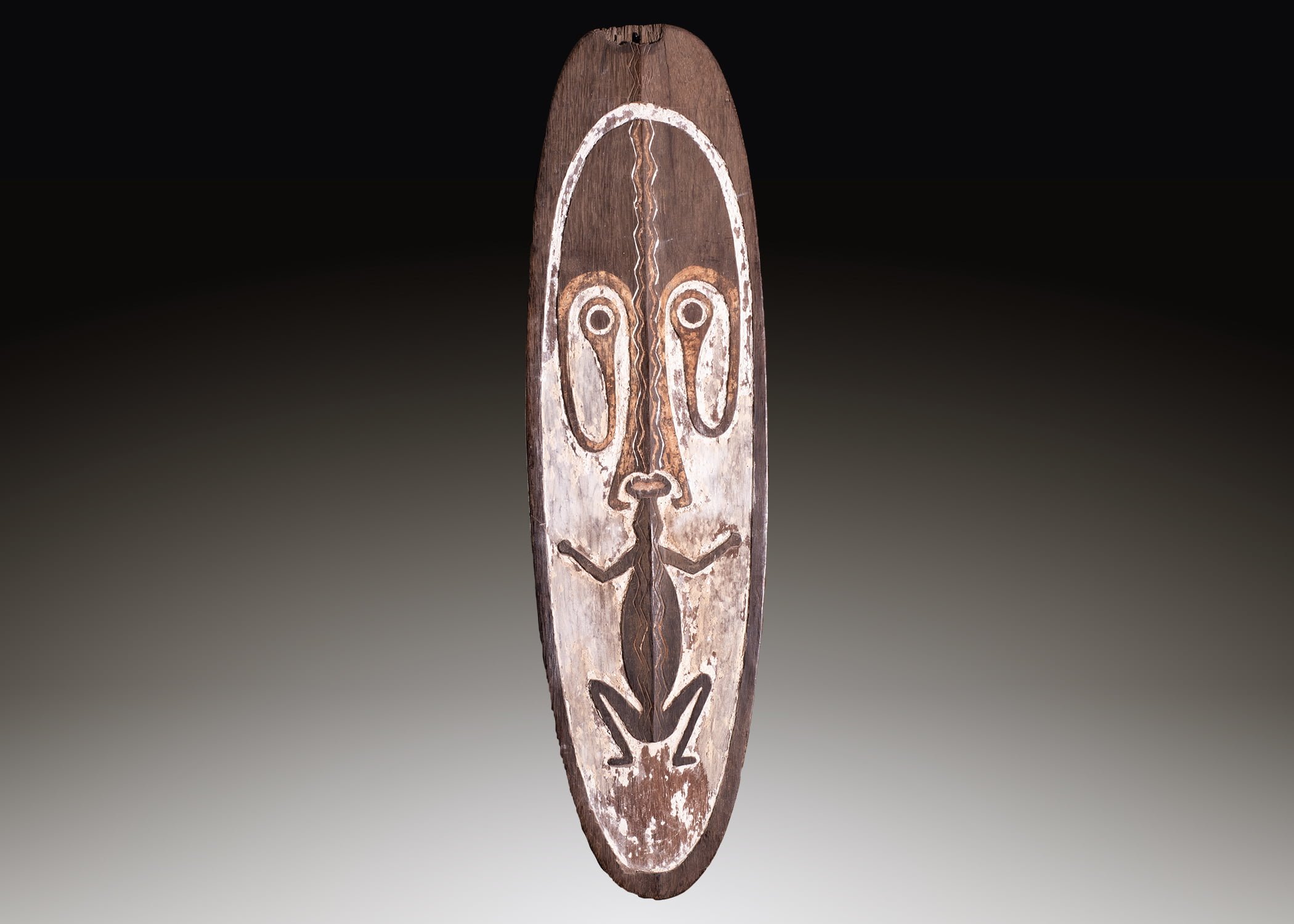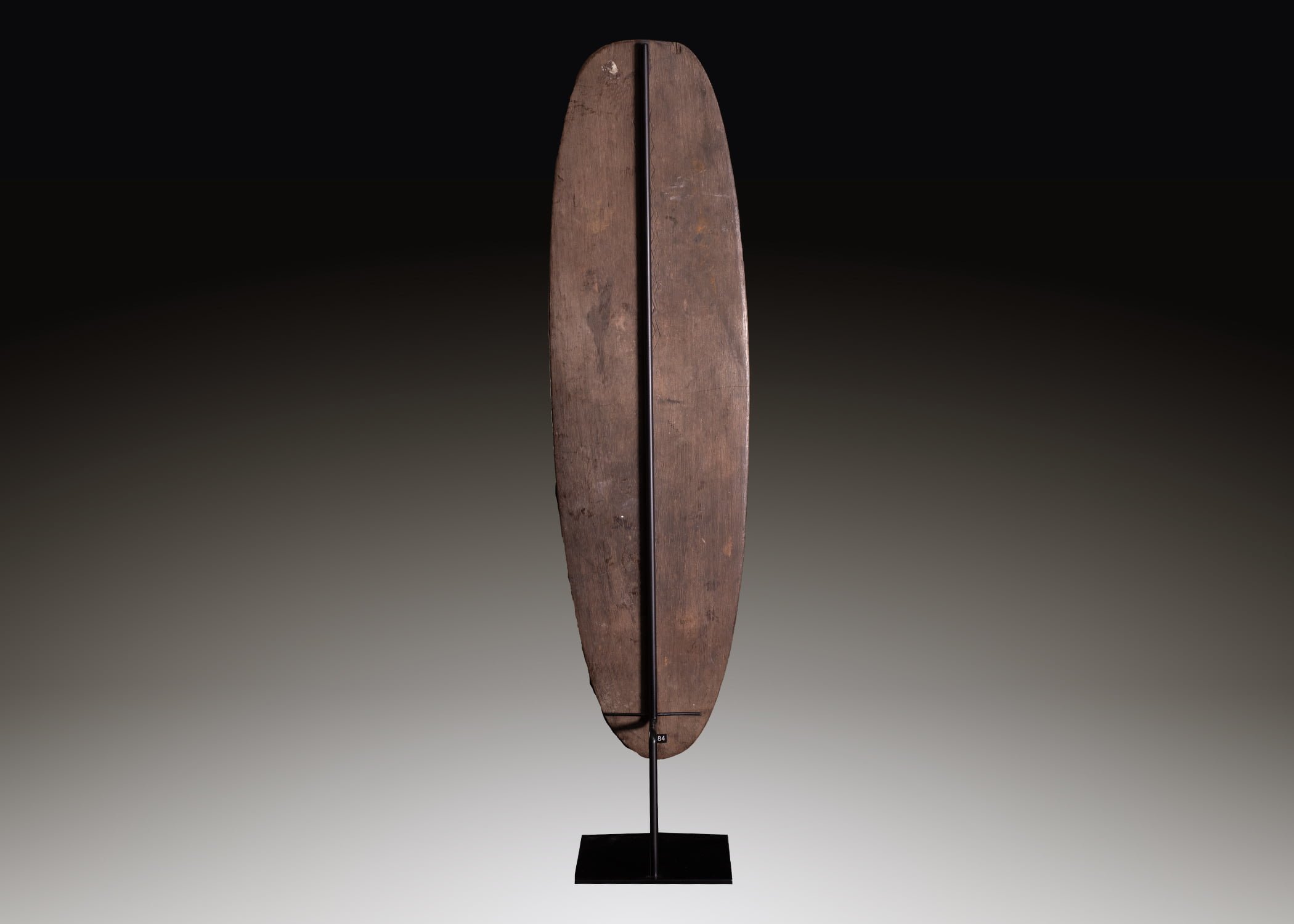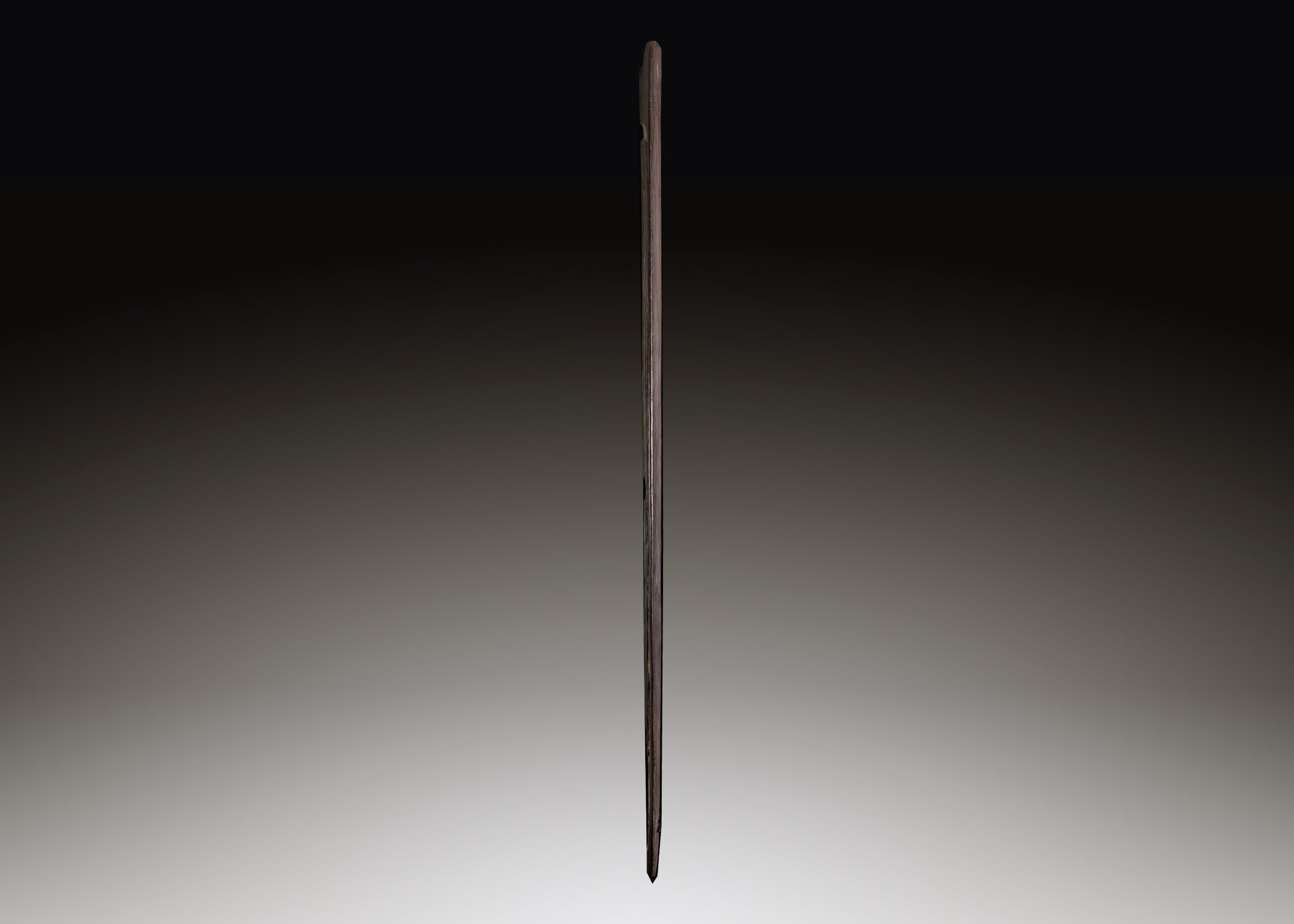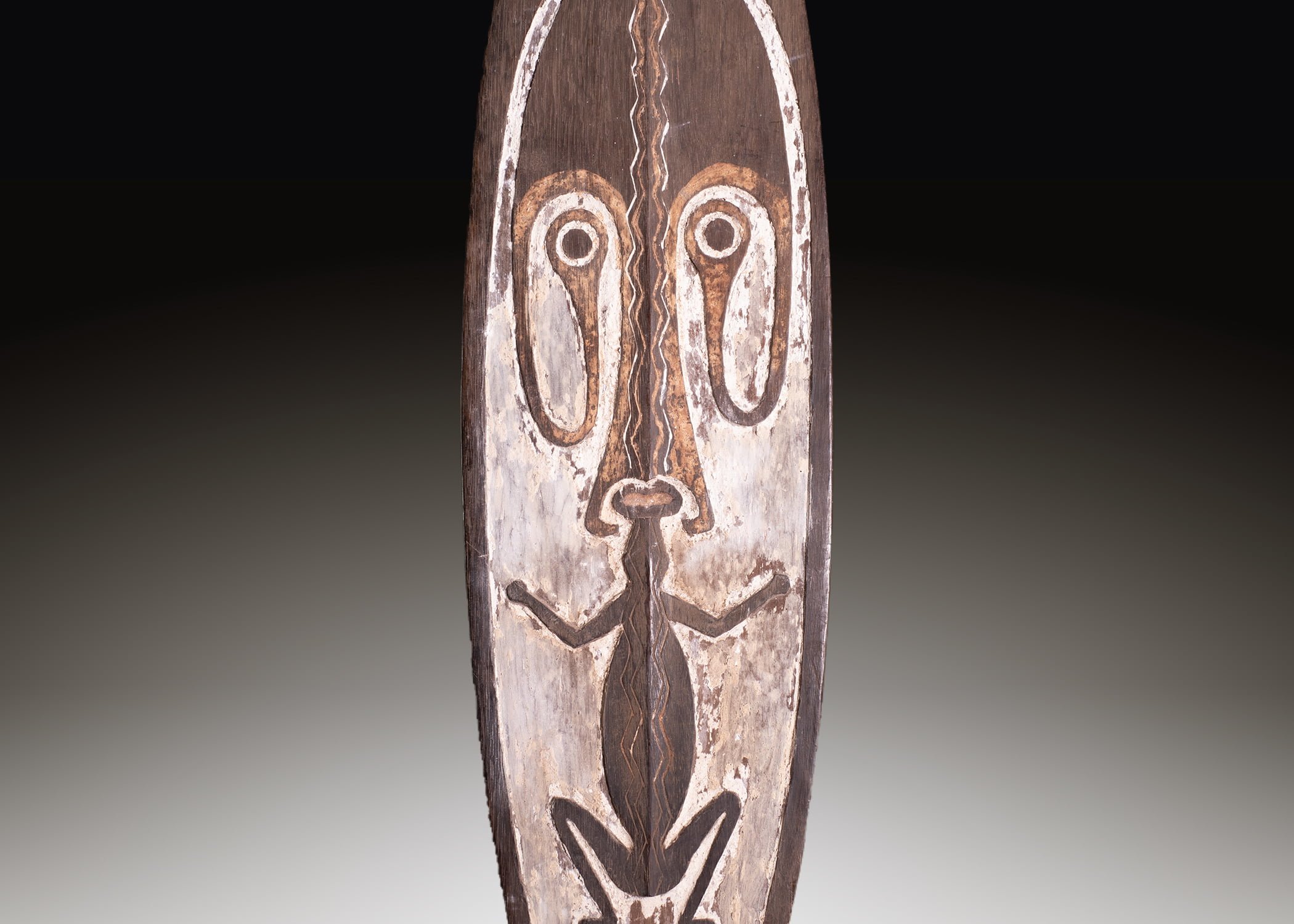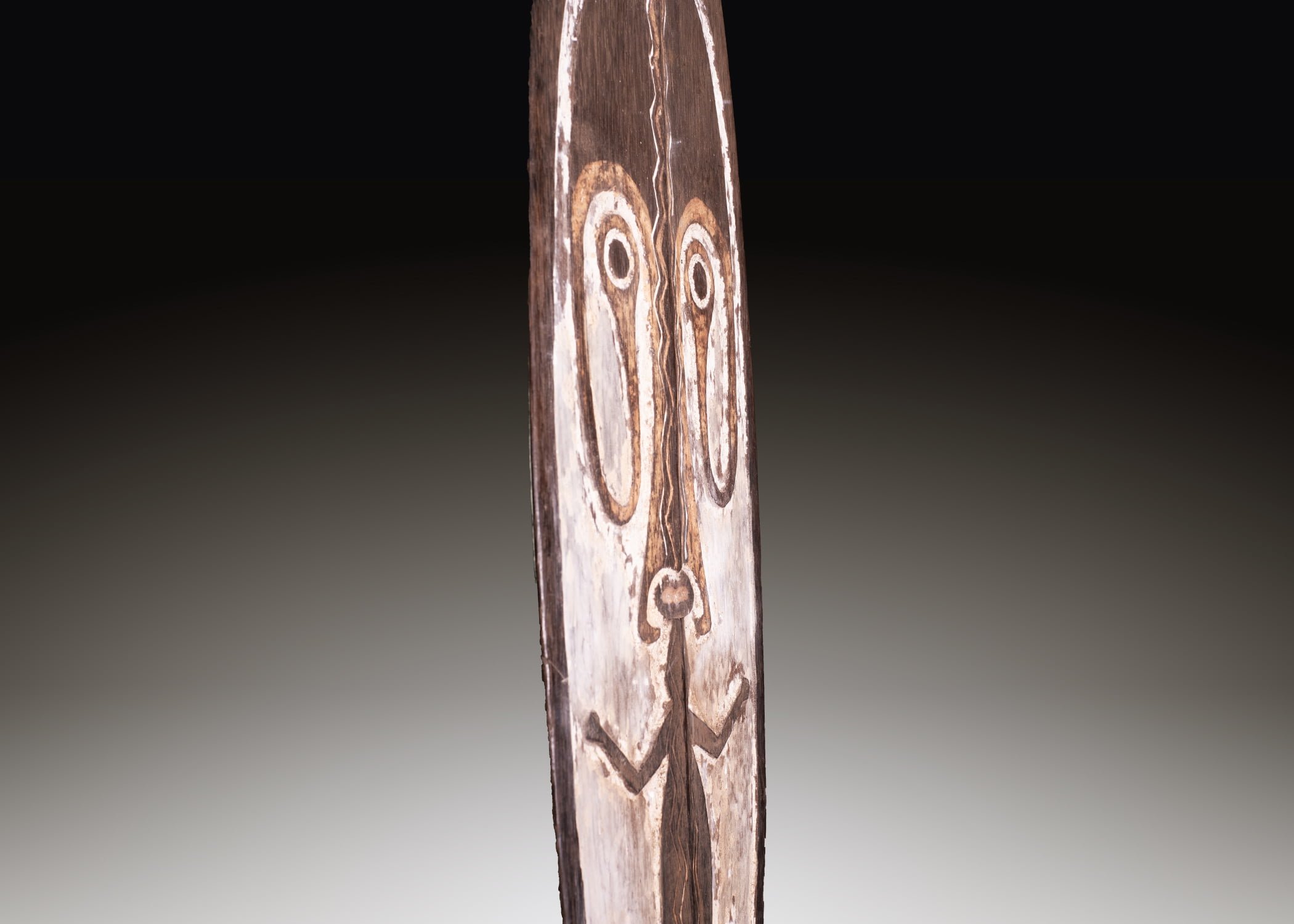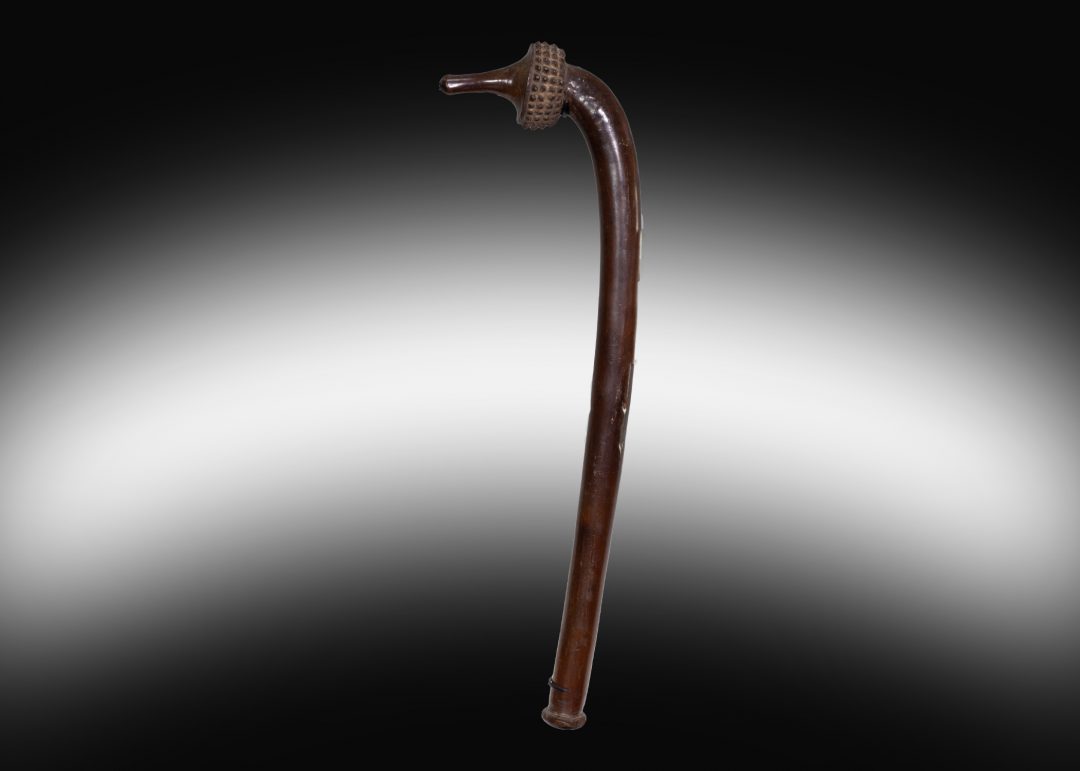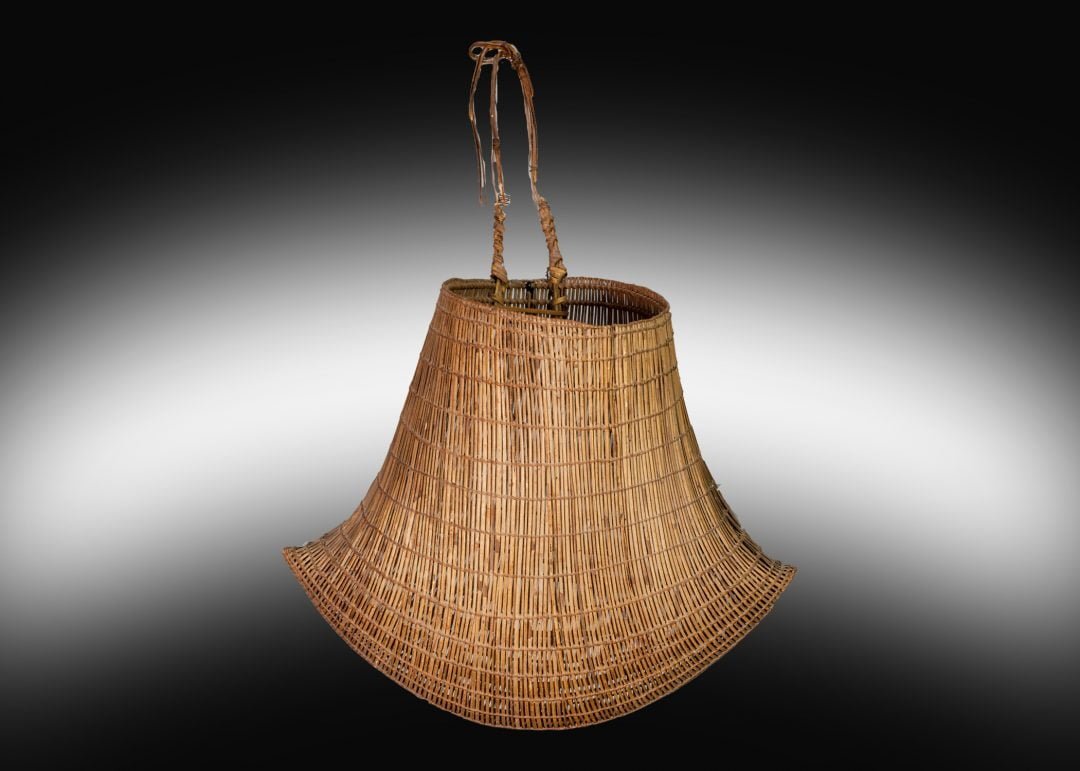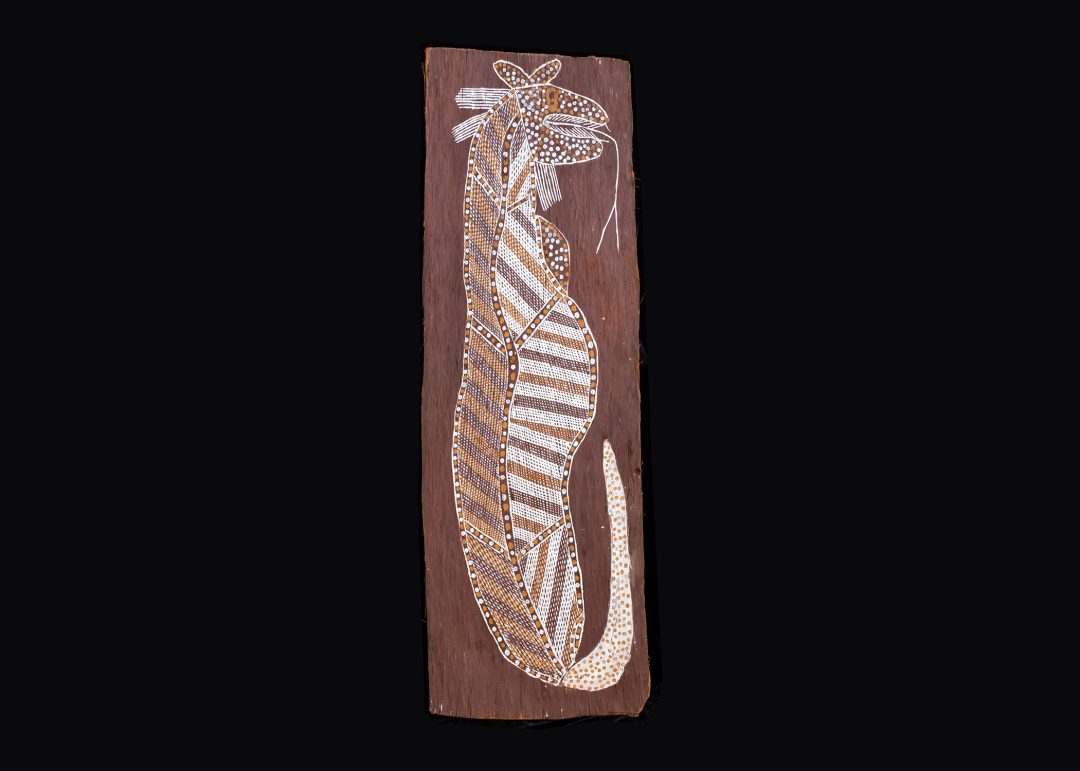Kerewa Gope Board
- TitleKerewa Gope Board
- LocationGoaribari Island, Papuan Gulf
- Date1960s
- Size88cm (L) x 19cm (W)
- PricePrice on application
The signature art form from the Papuan Gulf was undoubtedly the spirit board. These oblong two-dimensional objects were known by different names such as a gope, koi, or hohao, depending on the region in which it was made. This gope board was made from the blade of a broken paddle. It has a raised relief design that has been painted in black with the sunken ground painted in white The figure on the board is carved in a style characteristic to those of Kerewa.
In the past, the primary focus of religious and artistic life in the region was on powerful spirits (imunu). Each imunu typically was associated with a specific location in the landscape, rivers, or sea, and was linked to the particular clan within whose territory it dwelt. The gope boards served as a dwelling place for an individual imunu, whose image appears on it. Gope boards were also regarded as protective beings that ward off sickness and other illnesses. Villages formerly had large communal men’s houses divided into cubicles, each allotted to a particular clan or subclan. Every cubicle contained a clan shrine, which housed the spirit boards, figures, human and animal skulls, and other sacred objects associated with the clan’s various imunu.
The board is presented on a custom metal stand
SOLD
The signature art form from the Papuan Gulf was undoubtedly the spirit board. These oblong two-dimensional objects were known by different names such as a gope, koi, or hohao, depending on the region in which it was made. This gope board was made from the blade of a broken paddle. It has a raised relief design that has been painted in black with the sunken ground painted in white The figure on the board is carved in a style characteristic to those of Kerewa.
In the past, the primary focus of religious and artistic life in the region was on powerful spirits (imunu). Each imunu typically was associated with a specific location in the landscape, rivers, or sea, and was linked to the particular clan within whose territory it dwelt. The gope boards served as a dwelling place for an individual imunu, whose image appears on it. Gope boards were also regarded as protective beings that ward off sickness and other illnesses. Villages formerly had large communal men’s houses divided into cubicles, each allotted to a particular clan or subclan. Every cubicle contained a clan shrine, which housed the spirit boards, figures, human and animal skulls, and other sacred objects associated with the clan’s various imunu.
The board is presented on a custom metal stand
SOLD
